Risk is a part of any successful business. This especially holds true when it comes to the increasingly popular practice of options trading, one that requires a certain degree of know-how and expertise if investors want to get the most out of their assets. In order to successfully trade options, new traders need to have an understanding of not only how they work but also what kinds of risks they entail. The largest mistake investors make when they first start out is taking on more risk than necessary.
To help you in your quest, we’re going to list a few of the more popular books on managing your risk when you are going to be trading options.
Before we start with that, if you don’t have a solid grasp of the basics of trading options, we recommend Samuel Goldman’s book, “How to Make Big Money Fast Trading Options” that you can get through Amazon here.
It’s a great introduction and way to start options trading (aside from getting a membership with the best option trading alert service).
In this quick article, we’re going to review the following books
- Options: Trading Strategy and Risk Management by Simon Vine
- Options as a Strategic Investment by Lawrence McMillan
- Option Volatility and Pricing by Sheldon Natenberg
- Fundamentals of Futures and Options Markets by John Hull
- Think Like An Option Trader: How To Profit By Moving From Stocks To Options by Michael Benklifa
The Business Of Options: Time-tested Principles And Practices by Martin O’connell- Is options trading Worth the risk?
- What is the safest option trading strategy?
- What is a safe method for beginner traders?
- How do I avoid taking too much risk?
- How can you manage risk in options trading?
- Is Options trading time riskfree?
- What is day trading risk management?
- What is the best book on day trading for risk management?
- Commonly Asked Questions
- Final Thoughts
Options: Trading Strategy and Risk Management
One book that every options trader should have on his or her bookshelf is: Options: Trading Strategy and Risk Management by Simon Vine.
This best-selling book offers an extensive analysis of the risks associated with options trading, and how best to prevent them from causing investors any problems.
With chapters focusing on risk management, using derivative securities such as options, technical analysis and fundamental analysis methods for investing, this book will get readers well on their way to becoming better traders without even picking up a single stock or share.
It provides readers with all the information they need in one simple package.
Options as a Strategic Investment
Another best-selling options book is: Options as a Strategic Investment by Lawrence McMillan.
This best seller provides an overview of the best strategies and methods for investing in options, and how best to manage risk when using them.
Perfect for any beginner just starting out, this book breaks down concepts such as long term and short term investing, understanding volatility and managing your portfolio.
This book offers some helpful tips on how best to generate profit from different types of investments such as covered calls, straddles and spreads among others. It also goes over various ways to manage risks associated with those strategies.
Option Volatility and Pricing
Finally, another best-selling best risk management books for options trading is Option Volatility and Pricing by Sheldon Natenberg.
This best seller offers a thorough analysis of the risks involved when trading options, through the use of real examples taken from conventional option pricing models.
Providing an in-depth look at different kinds of risks associated with options trading, this book helps investors make informed decisions about their investments. It also explains how best to avoid making common mistakes made by other traders.
Fundamentals of Futures and Options Markets
If you are looking for something a little more advanced, best risk management books for options trading might include: Fundamentals of Futures and Options Markets by John Hull.
This best-selling book offers readers an in-depth insight into the world of futures and options markets, providing thorough coverage of the subject that’s perfect for students just starting out.
It breaks down concepts such as price behavior in different markets, derivatives’ pricing techniques and volatility measures, among others.
The best thing about this book is that it covers everything investors need to know when they are entering the market to trade options or any other form of derivative securities – including indexes, commodities and equity shares. It also goes over how best to manage your risks when investing in those markets.
Think Like An Option Trader: How To Profit By Moving From Stocks To Options by Michael Benklifa
This book offers a comprehensive overview of the best strategies and methods for investing in options, providing an honest assessment of how best to approach the subject.
Perfect for any beginner just starting out, this book breaks down different kinds of strategies for investing in options, how best to manage risks associated with those strategies and barriers that might cause problems along the way. It also goes over time value decay, volatility measures and stock price behavior among others.
The Business Of Options: Time-tested Principles And Practices by Martin O’connell
This one provides a thorough and in-depth look at the world of options, using real examples to explain terms such as option pricing models and option Greeks.
It also offers step by step advice on how best to manage risks when investing in options such as volatility and liquidity measures, among others.
Best of all, this book shows readers how best to use various concepts they learned about when trading stocks in order to trade options more successfully – which means it’s perfect for any beginner just starting out with investing in derivatives!
You can see more details on the book by clicking here.
All of these books are best sellers for good reason. Combined, they provide readers with enough knowledge to allow them to trade options successfully without taking on unnecessary risk.
Is options trading Worth the risk?
Yes, because an investor can make a profit without incurring the risks associated with other investments.
There are two primary reasons to be interested in options trading: opportunity and risk management. Options offer investors opportunity to make a profit from certain market moves that stocks, bonds, mutual funds or any other instruments typically do not allow for–namely downward movements in the price of an underlying security from when you buy this instrument.
In short, to answer your question about whether an investor should consider options trading worth the risk – yes! You can speculate on different outcomes in a particular investment option and in turn you might well find yourself benefiting from both upwards and downwards movements which in themselves may provide great financial rewards.
It’s also a great way that you can use leverage to enjoy huge financial gains and lower your cost of investment and capital at risk when compared to buying full positions in the same stock.
What is the safest option trading strategy?
The safest option trade is typically a “covered call.”
A covered call is a type of conservative options trading strategy where you borrow shares from your broker and sell them against the option being sold. A covered call is best used when an investor believes their stock will remain flat or slightly down for a period of time. The covered call allows the investor to continue holding onto their position, while also giving them the opportunity to collect premiums for writing calls against that same position.
What is a safe method for beginner traders?
The best way to avoid some of the more common mistakes many beginning investors make is by learning how different types of options work before jumping in with both feet. In addition, it helps if they also get a handle on what kinds of risks are involved with investing in options too This way, they can decide which types of options best suit their individual investment goals.
Also, it helps if they learn how to best manage their risks. Moreover, even seasoned investors who possess the knowledge and expertise need to read through important risk management best practices on a regular basis-just like doing legal or financial due diligence – something that is absolutely essential for every investor regardless of experience level. There are several types of options trading strategies which can be employed by beginning traders looking enter into the market with minimal risk Capitalizing on known strategies along with sticking to some proven best practices will allow you so as to reduce the odds of incurring any devastating losses in your portfolio, whilst maximizing profits instead
How do I avoid taking too much risk?
The biggest way you can avoid taking on too much risk when trading is to only trade money that you can afford to lose and limit the size of the positions you’re trading at any given time.
Another way that you can limit your risk is to ensure that you’re trading using the best information possible.
How can you manage risk in options trading?
When a trader is considering a course of action with options, he or she should evaluate three fundamental factors:
- The strength of the underlying asset’s position
- Whether the strategy involves implementing a positive or negative risk profile
- The probability that the trade will result in profit.
The objective in managing risks using these criteria is to reduce losses and increase profits by maximizing profitable opportunities at minimal expense while retaining adequate levels of protection against catastrophic loss when necessary.
It’s important to keep track of what you have invested so that if your trade does not work out in your favor, you can try to sell off part of it in order for it not to become a huge investment failure and affect all other investments in your account.
Is Options trading time riskfree?
Options trading isn’t risk-free.
Options trading is a leveraged investment. With the right balance of an excellent strategy and favorable market conditions, options traders can often make more money than someone who just buys stocks outright, but not always. Continual adjustments to individual strategies and investments are necessary as market conditions change.
What is day trading risk management?
There are two types of risk management: preventive and corrective.
Preventive risk management can be as simple as understanding the risks involved before you take on a project, and then establishing safeguards or fixes to those risks that involve proactive action. Corrective risk management is used only when problems arise and some additional effort is necessary to remedy them.
Since trading requires your funds to be committed for periods ranging from seconds to days, it’s prudent for many traders not to use all their capital at one time in a single trade. A good rule of thumb with stocks is never use more than 2-3% of your trading capital per trade, which means you need an account with sufficient equity funds for this sort of activity if you wish to engage in.
What is the best book on day trading for risk management?
The best book on day trading for risk management is Don McCullough’s One Day Trading for Dummies.
As you question implies, this is a difficult topic because so much depends on your individual circumstances. But many traders find that the introduction to the subject in McCullough’s book to be both informative and concise, while still providing plenty of tips and techniques for successful day trading. If you are serious about learning how to trade in the stock market using your phone or computer (and doing it well), then study carefully through his steps-by-steps procedures for profiting with no loss except time spent at the keyboard! There are also good trading indicators that he’s been able to use successfully for years.
Commonly Asked Questions
How to trade using the future and Options Trading?
Options trading is simple. You can purchase options that are quoted on an exchange, either by entering an order with your broker or preferably through a system many brokers have now, to create “virtual” limit orders for you.
If you want to trade using futures, what I recommend is opening up a spread account which will allow you to take advantage of volatility in the markets. This way, if the market rises then down again again very quickly then closes, then this type of account would have made money – without having traded anything.
Why is time important in Options Trading?
Theoretically speaking, the more time available to an option trader, the more favorable his or her position.
This is because all other factors being equal, a greater amount of time means the underlying security has a chance to go higher in value before it expires. As such, having options with longer expiration dates would theoretically be preferable to those with shorter expiration dates under normal circumstances.
However, this is not always true and can lead to unexpected consequences; for example some traders may prefer shorter-dated options when there is excessive volatility about whether a particular company’s earnings will be higher or lower than expectations.
How to trade with one day options?
One day options are great for traders because they can trade stocks that deal in a lot of volume.
Since the expiration date is only one day away, it’s unlikely that a stock will change by a significant margin in such a short amount of time. Additionally, one-day trading offers instant profit and you can buy back your options at close to the same price which you originally sold them if the original estimate was accurate. It also enables traders to have more safe capital to risk without going significantly over their set allocation – so losing money on this small trade won’t be as bad should it go wrong. All things considered, option trading with just “the next 24 hours” gives the trader much less predictability than 1 month or 3 month options.
What is pattern day trading options?
It refers to an equities trading strategy designed to generate trading profits by holding positions (either long or short) for no more than four consecutive, non-overlapping days and up to five total day.
Pattern day traders spend the majority of their time in market profile mode — following an active security — and usually trade much larger positions than those made by traditional investors. These professionals tend to be well versed in technical patterns because such knowledge aids them in recognizing good entry points which give them the opportunity to quickly recognize profitable trades.
Pattern Day Trading is not recommended as a way of investing because there are greater risks associated with these strategies.
Securities that are traded using this sort of strategy includes stocks, bonds and forex markets.
What are some strategies for options trading?
A strategy that an investor could use in trading options is to buy call options if the cost of entry for each deal is relatively small. The idea behind this strategy is that by paying a little upfront, the trader can potentially make a lot more money on speculative stock advances.
If you take the other side of the trade and buy puts, you would make money if the stock dropped in price.
Inside The Empirical Collective, we recommend new traders begin by buying calls or puts.
This is because the trades are easy to implement, even small accounts can trade them, and they are easy to understand and get out of.
What makes one day option trading different from other types of option trading?
One day option trading differs from other types of options strategy because it has a very short lifespan. The expiration date for this type of option is the following business day, so an investor might have to trade more often or have a larger number of trades open simultaneously.
What is ES Options Trading and how does it work?
ES Options Trading is a type of options trading where the underlying asset is the Standard and Poor 500 (S&P 500). The maximum potential profit or loss for an outright option differs based on whether the ES trades at a high, low, close to market value, or terminates before expiration.
Don’t get this confused with sk options trading, which is an options trading advisory newsletter.
Who is the best options trader ever?
George Soros.
George Soros is an American-Hungarian hedge fund manager who emigrated from Hungary in 1947, and went on to become one of the world’s most successful investors.
He did this by betting against the British pound in 1992.
Final Thoughts
All in all, financial risk management is one of the most important things to master, regardless of the financial instrument you’re trading.
Managing your position size and the finance amount you can afford to lose goes a really long way.
But educating yourself is absolutely key and something you need to ingrain as part of your trading philosophy.
If you’re not learning and becoming a student of finance, you’re going to pay the price.
So do yourself a favor and at least pick up an option trading book once in a while as a practical step towards growing as a trader.
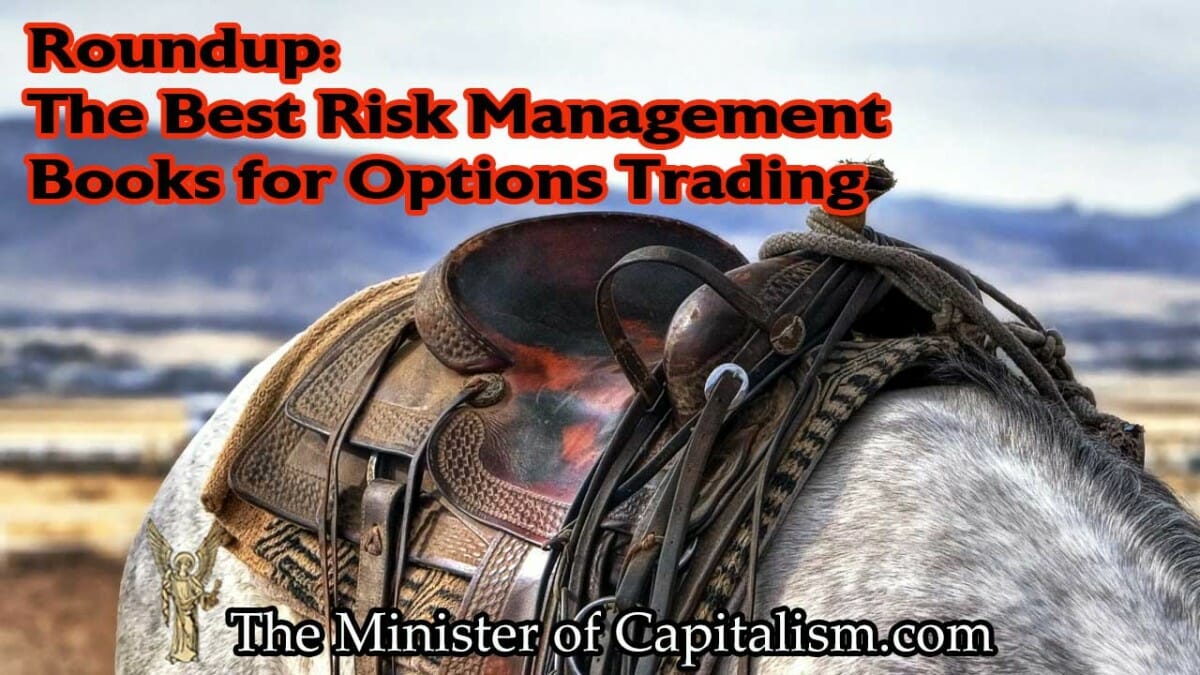
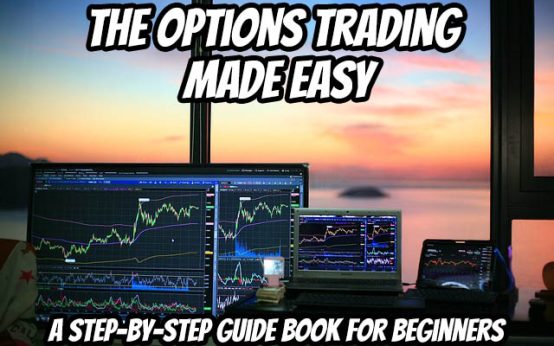 The Options Trading Made Easy: A Step-by-Step Guide Book for Beginners
The Options Trading Made Easy: A Step-by-Step Guide Book for Beginners 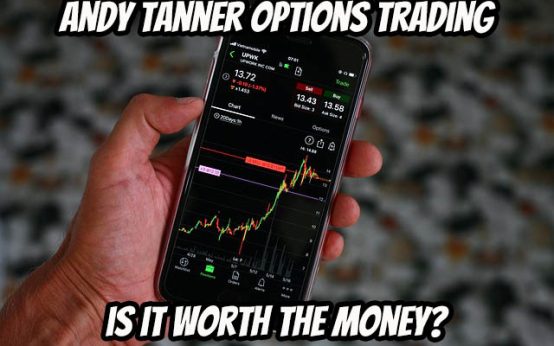 Andy Tanner Options Trading: Is it Worth the Money?
Andy Tanner Options Trading: Is it Worth the Money? 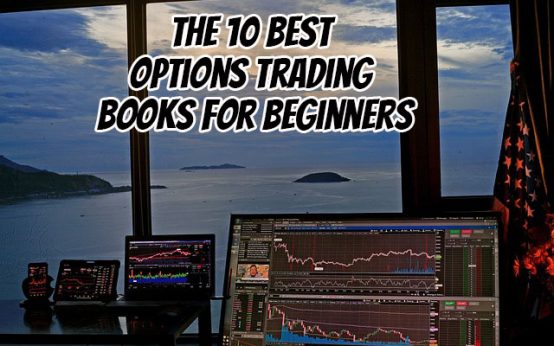 The 10 Best Options Trading Books for Beginners
The 10 Best Options Trading Books for Beginners 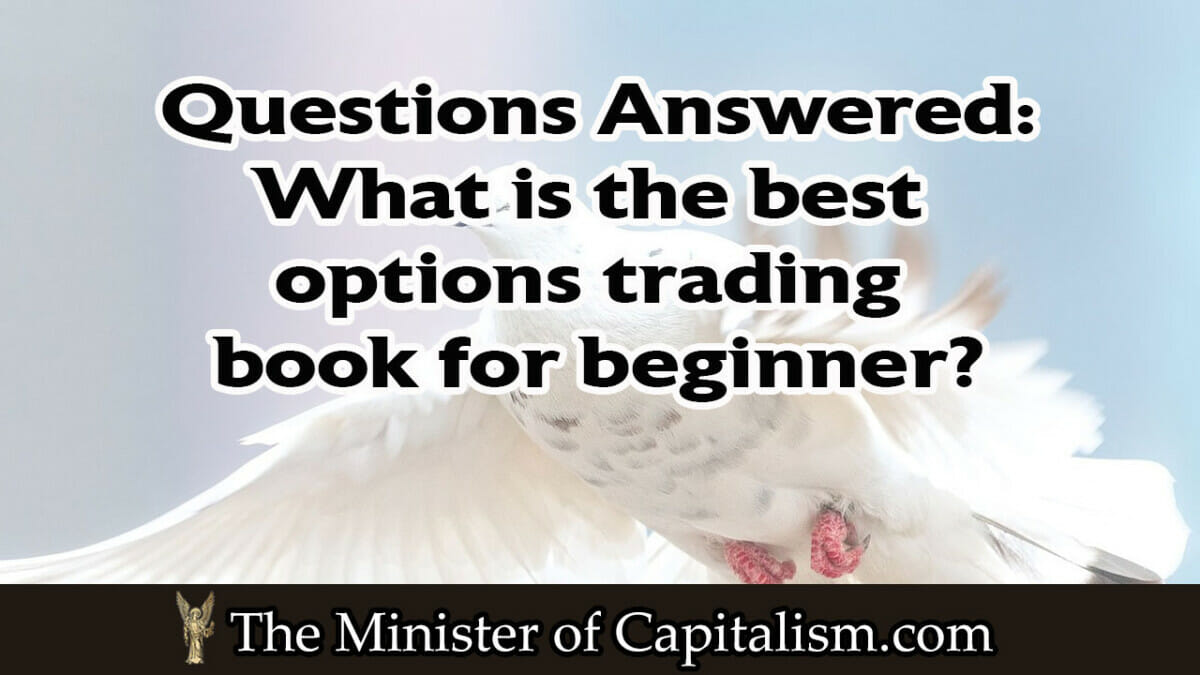 Best Options Trading Books For Beginner – Which Book Should You Read To Increase Your Trading Skills?
Best Options Trading Books For Beginner – Which Book Should You Read To Increase Your Trading Skills? 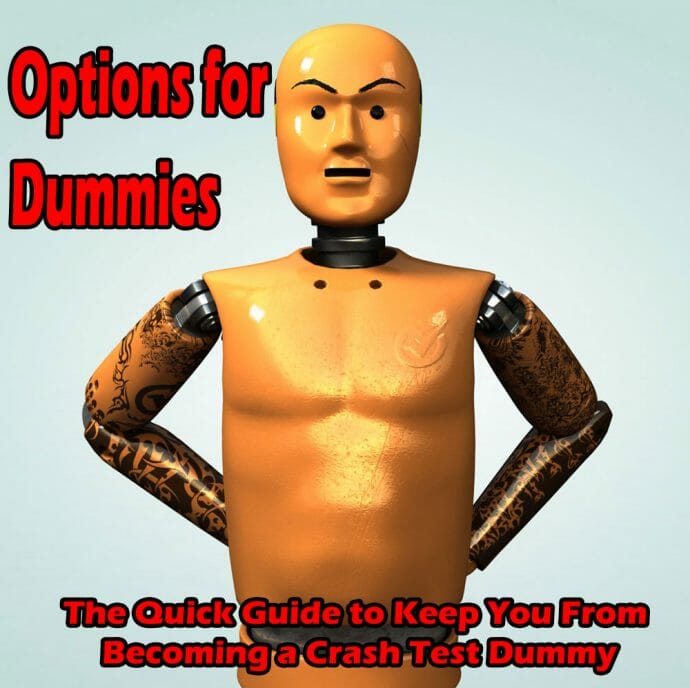 Options for Dummies – Trading Options for Dummies Guide
Options for Dummies – Trading Options for Dummies Guide  Trading Options for Dummies Book: The Overview New Traders Need to Read
Trading Options for Dummies Book: The Overview New Traders Need to Read